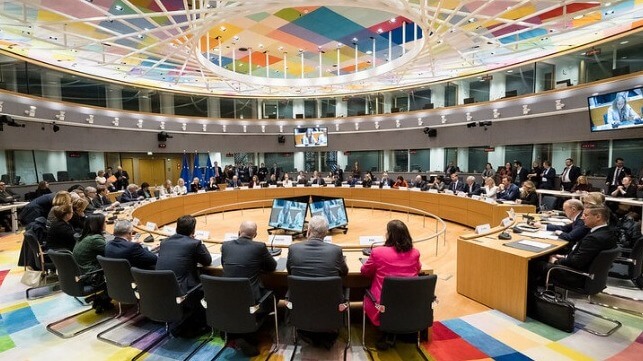EU Adopts Wind Charter to Accelerate Offshore to Reach 111GW by 2030

Europe took a significant step forward in its renewable energy plan with the adoption today, December 19, of the Wind Charter which lays out an aggress framework for doubling the current deployment rate for wind energy in all its forms. The European Union highlights that wind energy has historically been a success story for Europe and must play a critical part in the region’s renewable energy strategy.
Europe recently adopted a strategy that calls for at least 42.5 percent renewable energy generation by 2030 and an ambition to reach 45 percent. To achieve this goal, there must be a massive increase in the EU’s installed wind energy capacity. The Wind Charter which was today endorsed by 26 EU Energy Ministers and more than 300 companies from all parts of the wind energy sector develops a strategy to achieve 111 GW of offshore renewable energy by 2030. Only Hungary failed to endorse the plan, with representatives saying the country is working on legislative procedures.
“Today is a huge day for Europe’s wind energy industry,” said Giles Dickson, CEO of WindEurope, an industry trade group. “Twenty-six countries have committed to implement the actions set out in the EU’s excellent Wind Power package. The actions on permitting, finance, and auctions will help boost the expansion of wind energy and strengthen Europe’s wind industry.”
The Wind Charter follows initiatives adopted by the EU in October to advance the industry. The EU moved to improve access to finance for wind energy investors with the European Commission providing €4 billion for an Innovation Fund as part of a call aimed at supporting investment in clean tech manufacturing. The European Investment Bank also changed its lending rules for the sector and launched a new €5 billion counter-guarantees scheme for wind turbine manufacturing.
Supporters of the initiative highlight however that much of the action will fall to the individual countries to achieve the objectives. The Wind Charter sets out specific steps and seeks to coordinate the next phase of development for wind energy across Europe.
Countries are committing as part of the charter to ensure a sufficient, robust, and predictable pipeline for the development of wind energy projects. They are committing to strengthening their collaboration to identify barriers, especially in the permitting process. They will also in coordination with the European Commission identify ways to potentially accelerate permitting.

that matters most
Get the latest maritime news delivered to your inbox daily.
They will also improve, simplify, and make the design of auctions more consistent across Europe. This includes creating a coordinated schedule for future auctions. Member states are pledging to improve long-term visibility by developing 10-year plans and long-term strategies for a 2040 outlook.
Other parts of the charter include efforts to support the scaling up of wind equipment manufacturing capacity in the EU. They will also work with the companies in the industry to ensure that business processes, governance, products, and services meet high-quality standards while also supporting the accelerated deployment of offshore wind projects. Contained within the charter is also an agreement to review and identify potentially unfair trade practices in foreign wind product manufacturing. Specifically, they will be reviewing the increasing competition from China.
